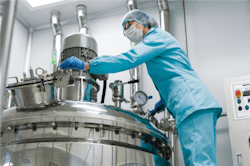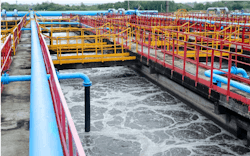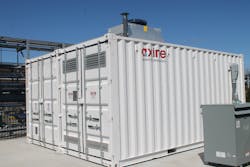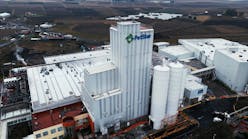Pharmaceutical medicines play a critical role in human and animal health. However, in recent years, there is growing evidence that active pharmaceutical ingredients (APIs) are accumulating in rivers, lakes, and drinking water worldwide and impacting aquatic ecosystems. As a result, pharmaceuticals in the environment (PiE) has emerged as a global health risk according to the UN, WHO, European Commission, and World Economic Forum.
Leading pharmaceutical manufacturers have taken steps to tackle this issue by collaborating with researchers, nonprofits, and international agencies to develop and implement new, innovative solutions across the pharmaceutical value chain. Meanwhile, governments have generally been slow to react with clear guidelines, regulations, and oversight.
There are several ways pharmaceuticals reach the environment. The most well-known pathway is through normal drug use by consumers and animals. Because our bodies only metabolize a portion of any drug, the rest passes into the sewage system and to wastewater treatment plants (WWTP) that are not designed to treat APIs. As a result, rivers and lakes have become contaminated with pharmaceuticals. A second pathway is the improper disposal of unused or expired medication. Although drug pollution from consumers is widespread, it generally occurs in low concentrations.
A third pathway is API-contaminated wastewater discharged by pharmaceutical plants. Several recent studies, including a 2018 U.S. Geological Survey report, show that pharmaceutical manufacturing facilities are a significant source of pharmaceutical pollution. Compared to consumer sources, point source pharmaceutical pollution discharged from manufacturing facilities can be found at much higher concentrations and at levels believed to endanger aquatic life downstream. As a result, many pharmaceutical manufacturers are adopting treatment solutions to eliminate APIs in wastewater in order to mitigate future environment, health, financial, and reputational risks.
This article reviews conventional approaches for addressing APIs in manufacturing effluent, including thermal oxidation, advanced oxidation processes (AOPs), and activated carbon. It also highlights a new electrochemical advanced oxidation process (EAOP) developed by Axine Water Technologies as a new standard for treating APIs in pharmaceutical wastewater.
The pharmaceutical industry manufactures thousands of APIs for a wide range of treatment applications including cancer therapies, pain management, antidepressants, and antibiotics. While the full extent of the impact of pharmaceutical pollution on humans, animals, and the environment is the topic of ongoing research, antibiotic APIs have been linked to the growing problem of antimicrobial resistance (AMR) and the rise of antibiotic-resistant superbugs.
At the 2016 World Economic Forum, over 100 pharmaceutical and biotechnology companies and associations signed the Industry Declaration on AMR as a collective commitment to combat the global threat of AMR to human health. The declaration was followed by adoption of an Industry Roadmap for Progress on Combating AMR and the creation of the AMR Industry Alliance to research, develop, and implement solutions to address PiE.
One of the outcomes of this work by industry is development of Predicted No-Effect Concentration (PNEC) values for APIs. PNECs are industry-recommended targets for API concentrations in water that are deemed safe for wildlife and receiving ecosystems. PNEC levels are very stringent, in many cases requiring treatment to <1 part per billion. Another outcome is increased industry focus on reviewing and tightening API manufacturing supply chains and outsourcing standards to control the release of APIs into the environment. The overall aim of these solutions is to reduce the impact of pharmaceutical manufacturing on AMR.
Why Conventional WWTPs Aren’t Successful at Treating APIs
APIs are challenging to treat with conventional wastewater technologies because they are chemically stable, often recalcitrant and nonbiodegradable. In many cases, conventional on-site systems installed at pharmaceutical or at municipal WWTPs are either ineffective at treating APIs or unable to treat APIs to the levels required to minimize impacts to the environment.
Most WWTPs use primary, secondary, and sometimes tertiary treatment processes. Primary treatment involves the removal of solids via screens, grit chambers, and settling. Secondary treatment involves the use of biological processes (activated sludge, trickling filters, etc.), which use bacteria to consume organic matter and break it down into harmless by-products, removing up to 85 percent of the organics. Tertiary treatment further improves the effluent quality and typically involves processes such as filtration, nitrogen and phosphorus removal, and disinfection.
The efficiency of API treatment and removal by WWTPs varies between treatment facilities. While bacteria in the secondary process can break down some APIs or alter them enough to render them harmless, not all APIs will be completely degraded by biological treatment and some will not degrade at all. Furthermore, some APIs are toxic and can kill the bacteria, reducing the efficiency of the WWTP. Therefore, pharmaceutical manufacturers must employ other disposal approaches and/or advanced treatment technologies to ensure that all APIs are destroyed before treated water is discharged into the environment.
The most common approaches for addressing API-contaminated wastewater are thermal oxidation, advanced oxidation processes (AOPs), and activated carbon. Each of these approaches has advantages and disadvantages and are summarized below.
Thermal oxidation/incineration: Trucking and incineration of API-contaminated wastewater is a well-established practice in the pharmaceutical industry. Wastewater is collected in drums, totes, or tanks, transferred to trucks, and then transported, often hundreds of miles, to be incinerated at special waste facilities. Wastewater is conveyed to oil- or natural-gas-fired furnaces and incinerated at temperatures between 800 and 1,200°C to ensure complete destruction of APIs. Trucking and incineration is expensive, energy intensive, higher risk, and frequently at odds with corporate sustainability goals aimed at reducing waste, lowering greenhouse gas emissions, and improving safety and environmental performance.
Advanced oxidation: AOPs use chemicals to generate hydroxyl radicals (OH*), which oxidize APIs in wastewater into smaller organic molecules. Conventional AOPs include ozone combined with hydrogen peroxide (O3/H2O2) and ultraviolet light combined with hydrogen peroxide (UV/H2O2). While AOPs can be effective at treating some APIs at low concentration, they are expensive to implement and have performance limitations. One of the main drawbacks of AOPs is they are often unable to achieve complete destruction of APIs to meet stringent PNEC values, and can produce toxic oxidation by-products.
In the case of O3/H2O2, ozone is typically generated on-site, which is capital-intensive to design, build, and operate. Ozone is also toxic, requiring rigorous monitoring and destruction of process off-gas. H2O2 is a hazardous chemical with regulatory requirements for storage and handling. UV/H2O2 also requires significant upfront capital investment and has high operating costs including energy, UV lamp replacement, ballast replacement, and H2O2. In addition to the safety and regulatory considerations of H2O2, there is the additional requirement for disposing of UV lamps, which in most cases contain mercury.
Activated carbon: Activated carbon is a media commonly used to adsorb natural and synthetic organic compounds from wastewater. In certain applications, it can be an effective treatment technology due to the highly porous nature and large surface area to which contaminants may adsorb onto the media. In pharmaceutical applications, it is used to adsorb, and thereby isolate, APIs in wastewater. However, activated carbon is only effective on certain APIs and in most cases cannot reduce API levels in wastewater to PNEC levels. Activated carbon systems are expensive to operate and maintain because the carbon media requires frequent replacement or regeneration. The exhausted media must either be shipped off-site for disposal or regenerated on-site, which results in another API-contaminated waste stream that requires management and disposal.
New Standard for Treating APIs in Pharmaceutical Wastewater
Axine created a new standard for treating APIs in manufacturing wastewater based on its proprietary electrochemical advanced oxidation process (EAOP). Axine’s EAOP technology applies electricity to advanced catalysts to generate mixed oxidants. APIs and other organic pollutants are oxidized and mineralized to trace by-product gases such as H2, O2, N2, CO and CO2. No liquid or solid waste is generated and no hazardous chemicals are used.
Axine’s EAOP technology is commercially proven and capable of treating a diverse range of complex APIs and/or organic pollutants to achieve the most stringent PNEC levels through multiple oxidation mechanisms. Treated water can be safely discharged to a sewer or reused on-site (as cooling tower make-up). Table 1 shows API concentrations before and after treatment by Axine’s EAOP technology in a mixed API wastewater stream.
Axine’s technology and service delivery model provides pharmaceutical manufacturers with a solution capable of treating all types of APIs to achieve PNEC levels at higher performance and lower cost compared to conventional AOP and other technologies. Axine’s technology can be applied to a range of pharmaceutical applications including treating APIs in clean-in-place rinse streams to avoid off-site incineration, pretreating API contaminated streams before on-site wastewater treatment, and treating APIs in whole plant effluent prior to discharge.
What’s Next for APIs in Pharmaceutical Manufacturing Effluent?
By 2025, the global market for APIs is forecast to increase to over $250 billion per year driven by increasing incidence of chronic diseases, rising cancer rates, a rapidly increasing geriatric population, and new biopharmaceuticals to address previously untreated diseases. At the same time, pharmaceutical companies are facing increasing pressure from consumers, investors, and regulators to ensure that manufacturing operations are not discharging API-contaminated wastewater that negatively impacts human health, aquatic ecosystems, and the environment. Within this changing market, Axine Water Technologies is committed to establishing and maintaining a new standard of on-site treatment solutions to help the pharmaceutical industry address this global issue.






